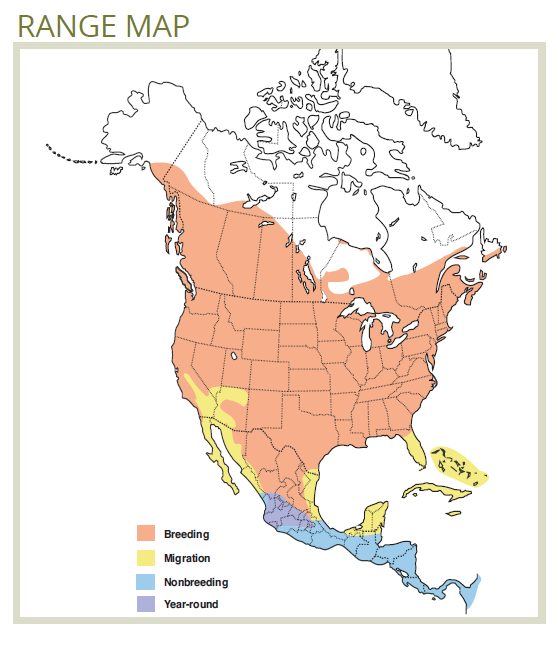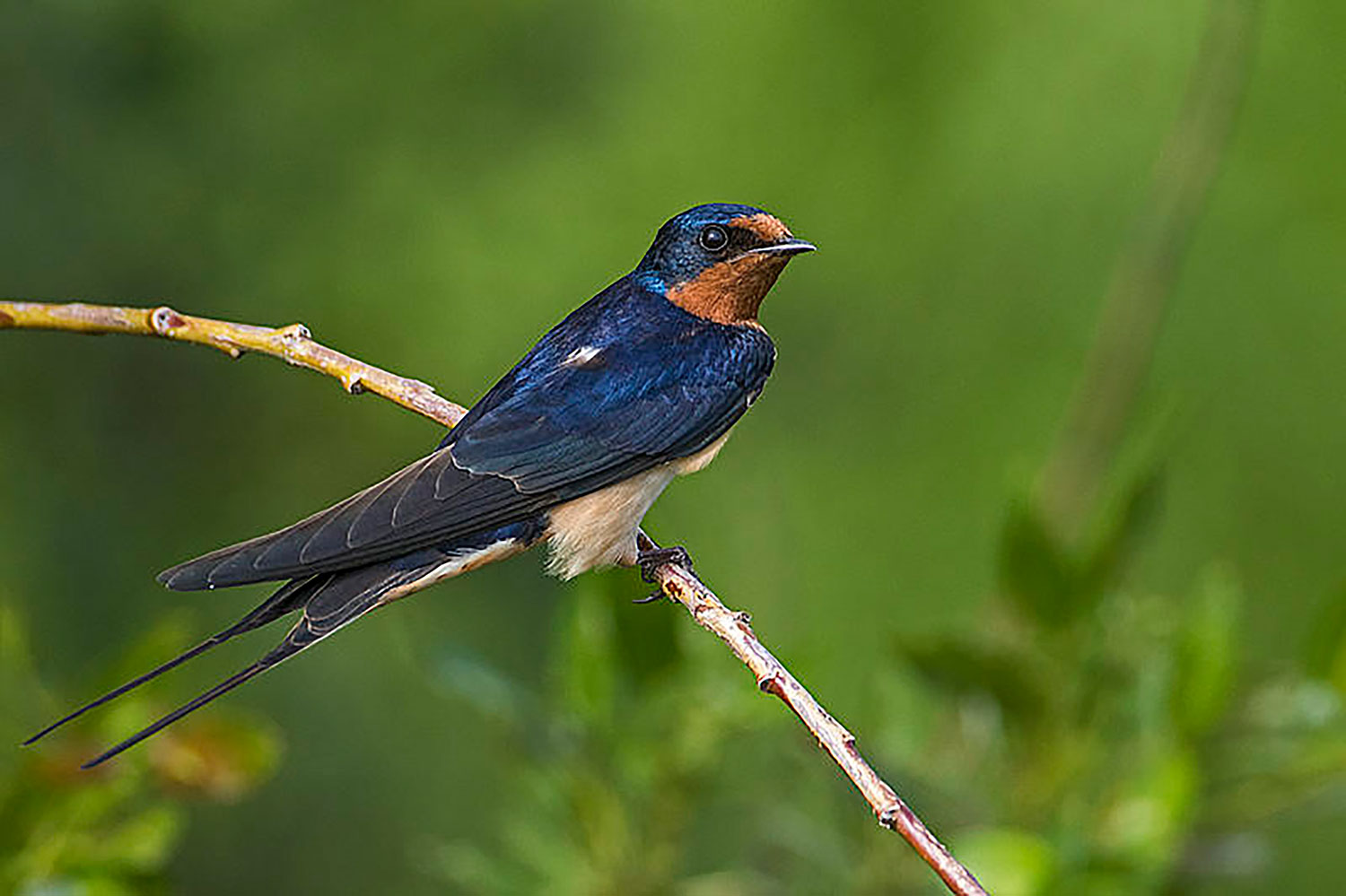The Barn Swallow is a common bird of agricultural areas where it predominately nests in colonies in open barns. In more forested regions the Barn Swallow nests in smaller colonies (sometimes single nests) on bridges, inside culverts, & other structures
Barn Swallow
(Hirundo rustica)
Habitat Ecology
Informing land and resource management
- Barn Swallow breeding habitat usually contains three important features.2
- Open areas for foraging (e.g., meadow)
- Nearby source of mud for use in nest-building.1
- Nest site is usually in or on a building (e.g., rafters, eaves, ledges, etc.), bridge, or culvert. Natural sites such as cliff faces and caves are also used but less frequently than human-made sites.1
- These birds mainly use agricultural areas for foraging, but may also use wetlands, lakes, and sometimes shrubby riparian areas.3 Large cutover areas and wet meadows may provide adequate foraging sites assuming available nesting sites are nearby.1,4

Response to Forest Management
- Threats to the Barn Swallow include direct prey reduction associated with insecticide use, indirect prey reduction associated with herbicide-caused vegetation changes, and loss of nesting sites due to building modification or intentional nest removal by people. While these threats are most severe within agricultural areas, they have implications in recent forest clearings where they may build nests on outbuildings, water crossings, or equipment.5,6
Stand-Level Recommendations
- Operators should be trained to recognize Barn Swallow nests (active and inactive). Bridges, outbuildings, and large (~1 m) culverts are attractive nest sites, and operators should note and record nests they observe on these structures.
- Prevention: Old nests reflect sites which may attract future nesting pairs. If these sites will be disturbed during the breeding season (May 1 to Aug 31), operators can prevent nest-building by blocking sites (e.g., eaves) using geotextiles, tarping, or canvas.7
- Do not use mist nets or other thin netting, which may entangle swallows.8
- Covering of empty nests and/or potential nest sites should be completed before April 1.9
- Nesting may be encouraged on structures that will not be disturbed during the breeding season, including by installing ledges or platforms that Barn Swallows and other species may nest on.10
- Avoidance: Operators should stay at least 1.5 m away from active nests (~May 1 to Aug. 31)9 and remain particularly watchful when young fledge (leave the nest but cannot fly).
Landscape-Level Recommendations
- Awareness of potential nest locations is important where all operations occur, but is especially important for operations near large open areas including wetlands, waterbodies, agricultural fields, and cutovers (e.g., during silviculture).
- Temporary crossing removal only before or after the breeding season, and protection of active nests until the breeding seasonis complete, are the main strategies for protecting Barn Swallows. Nest platform placement is a potential form of habitat enhancement on sites that will not be disturbed.10
References
- Falconer, M. 2018. Personal Communication. April 3, 2018
- Brown, C. R. & Brown, M. B. 1999. Barn Swallow (Hirundo rustica), version 2.0. in The Birds of North America (Rodewald, P. G., ed.) Cornell Lab of Ornithology, Ithaca, New York, USA. Available online: https://doi.org/10.2173/bna.452
- B.C. Conservation Data Centre. 2017. Species Summary: Hirundo rustica. Available online: http://a100.gov.bc.ca/pub/eswp/reports.do?elcode=ABPAU09030
- ABMI. 2017. Barn Swallow (Hirundo rustica). ABMI Species Website, version 4.1 Available online: http://species.abmi.ca/pages/species/birds/BarnSwallow.html
- Environment Canada. 2013. Bird Conservation Strategy for Bird Conservation Region 9 Pacific and Yukon Region: Great Basin. Canadian Wildlife Service, Environment Canada, Delta, British Columbia. 105 pages + appendices.
- Environment Canada. 2013. Bird Conservation Strategy for Bird Conservation Region 10 in Pacific and Yukon Region – Northern Rockies. Canadian Wildlife Service, Environment Canada, Delta, British Columbia. 109 pages + appendices.
- Ministry of Transportation. 2017. MTO Best Management Practices for Species at Risk Protection During Maintenance Activities. Ontario Ministry of Transportation, Policy and Planning Division, Transportation Planning Branch – Environmental Policy Office. Available online: http://www.raqsa.mto.gov.on.ca/techpubs/eps.nsf/0/1867bb469de0c3fa852580…$FILE/MTO BMP Manual for SAR Protection During Maintenance Jan 2017 Final ACC.pdf
- OMNRF. 2017. Best Management Practices for the Protection, Creation and Maintenance of Bank Swallow Habitat in Ontario. Ontario Ministry of Natural Resources and Forestry. Queen’s Printer for Ontario, 37 pp.
- Ferguson, G. 2014. Beneficial Management Practices for Barn Swallow (Hirundo rustica). The British Columbia Swallow Conservation Project. Available online: https://bcswallowconservationproject.wordpress.com/swallow-best-manageme…
- Bonar, R. 2018. Personal communication. April 6, 2018








